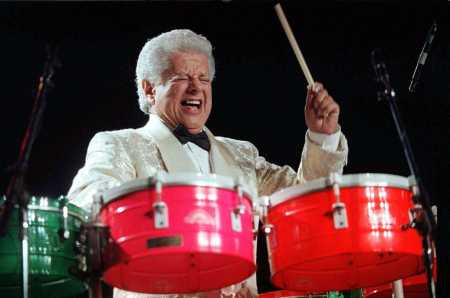Latin Legends recognized and loved by all
By: Annette Réine
Francis Sings Spanish and Latin American Favorites
Connie Francis Sings Spanish and Latin American Favorites
After the success of her 1959 album Connie Francis Sings Italian Favorites (which remained on the albums chart for 81 weeks and peaked at No. 4), Francis released more albums which appealed to immigrants in the United States.
Francis, who had studied Spanish in school, was fluent in the language which prompted her to perform the songs either entirely in Spanish or bilingual with a few lines sung in English.
The album was originally released in October 1960 on MGM Records. The album consisted of 13 songs, although 15 playbacks had been produced. First pressings of the album contain the complete intended listing of all 15 tracks on the cover. The songs Amor and Aquellos ojos verdes were not released in the U. S. and at that time were only available on singles and EPs in Spain and South America.
Cuchi -Cuchi Charo’s trademarked expression.
conniefCharo like Madonna is one of the few performers who goes by one name. Born in Murcia Spain Charo learned how to play guitar as a young girl she studied under the world famous master of flamenco guitar. She became a recording artist as a teen. In addition to Charo’s Music, TV & Film career she has also produced a video entitled Espana, Cani Dance don’t bullfight, She is a member of PETA who speaks against animal cruelty. Charo is currently performing in her new show Charo in Concert.
Desi Arnaz – Born to a wealthy family, the Arnazes fled Cuba for Miami after a revolution in 1933. After working a number of odd jobs to help support the family, Desi got his first musician’s gig as a guitarist for the Siboney Septet. After working briefly for Xavier Cugat in New York, Arnaz returned to Miami to lead a combo of his own and introduce the Conga Line to American audiences. It was such a hit, both locally and nationally, that Arnaz returned to New York to start his own band. He was offered a role in the 1939 Broadway musical Too Many Girls and later starred in Hollywood’s film version. It was there that he met his future wife, Lucille Ball. They were married in 1940 and the rest is history.
Domingo Samudio was born near Dallas Texas to a Spanish speaking couple of Mexican descent. He made his singing debut while still in second grade, representing his school in a live radio broadcast. Later, he took up guitar and formed a high school group with some friends, one of whom was Trini Lopez, who would later have several hit records of his own.
In the summer of 1964, Samudio went into the studio with a song that used the words “Hully Gully”. When told by the record company that they couldn’t use that phrase, Sam said, “OK, let’s kick it off, and I’ll make something up. “The name of my cat was ‘Wooly Bully’, so I started from there. I was just goofing around and counted off in Tex-Mex. It became the first American record to sell a million copies during the onslaught of the all the British groups.”
“Mambo King” Tito Puente is born
Tito Puente, the bandleader and percussionist who helped popularize Latin dance music and jazz in America, is born on this day in 1923 in New York City. During a career that spanned six decades, the dynamic showman nicknamed “El Rey” (The King), recorded over 100 albums, won five Grammy Awards and was referred to by The New York Times as “the most important Latin musician of the last half century.”
Ernest “Tito” Puente, the son of Puerto Rican immigrants, grew up in the Manhattan neighborhood then known as Spanish Harlem. As a child, he learned to play various instruments, including the timbales, a type of drum that would later become his signature. During World War II (1939-45), Puente who performed a variety of Latin music styles, received the title “King of Mambo” for his role in popularizing the fast-paced, rhythmic form of Cuban music. (Puente later played himself in the 1992 movie “The Mambo Kings,” based on Oscar Hijuelos’ novel “The Mambo Kings Play Songs of Love.”) In 1958, Puente released the album “Dance Mania,” which went on to become an international best-seller. In 1963, he recorded “Oye Como Va,” a song that would be a huge hit for rock guitarist Carlos Santana (1947-) and his band in the 1970s.
Jose was born blind, to humble beginnings, on September 10, 1945, in Lares, Puerto Rico. One of eleven boys, his love affair with music began at the age of three when he first accompanied his uncle on a tin cracker can. When he was five, his family immigrated to New York City. Young Jose learned to play the concertina at age six, using a handful of records as his teacher. At eight, he entertained his classmates at PS 57, and at nine, performed at The Puerto Rican Theater in the Bronx. Venturing beyond the accordion, he taught himself to play the guitar with undaunted determination and again, with nothing but records as his teacher, practicing for as many as 14 hours a day. Exposed to the Rock’n’Roll of the 50’s, Jose was then inspired to sing.
He played in coffee houses, clubs and cafes from Boston to Cleveland to Detroit, Chicago and Denver. Jack Sommer, an A&R executive from RCA, went to the Village to audition a trio who was there, saw Jose perform and signed him to RCA, instead. This was, indeed, the Birth of a Star.
Jose’s first major break in the industry, however, happened in the Spanish market when, in 1966, RCA execs in Los Angeles assigned him to staff producer, Rick Jarrard. Rick closely studied Jose’ intriguing style and recommended that he record a Doors’ song that he’d heard him perform in concert — a tune called, “Light My Fire”…
Singer/songwriter and musician Jerry Garcia was the front man for famed psychedelic band the Grateful Dead.
—Jerry Garcia
Born on August 1, 1942, in San Francisco, California, singer and guitarist Jerry Garcia helped form the group the Grateful Dead in the ‘60s. With albums like American Beauty, the band toured for decades with a highly devoted “Deadhead” following. Garcia also released numerous projects as a solo artist and with other musicians. . In 1965, he formed a band, the Warlocks, but on discovering another group with that name, it was changed to the Grateful Dead (1966).Having suffered greatly from drug addiction, he died on August 9, 1995
Celia Cruz
Celia Cruz was born in Havana, Cuba on October 21, 1925. She first gained recognition in the 1950s, as a singer with the orchestra Sonora Matancera. Relocating to the United States after the ascent of Fidel Castro, Cruz recorded 23 gold records with Tito Puente, the Fania All-Stars and other collaborators. Cruz won a “La hora del té” (“Tea Time”) singing contest, propelling her into a music career. Cruz’s first recordings were made in 1948. In 1950, her singing career started its upward journey to stardom when she began singing with celebrated Cuban orchestra Sonora Matancera. Cruz helped propel the group—and Latin music in general—to new heights, and the band toured widely through Central and North America throughout the 1950s.
At the time of the 1959 Communist takeover of Cuba, Sonora Matancera was touring in Mexico, and members of the band decided to leave Cuba for good, crossing into the United States instead of returning to their homeland. Cruz became a U.S. citizen in 1961, and Fidel Castro, enraged by Cruz’s defection, barred her from returning to Cuba.
Cruz is remembered as one of the 20th century’s most beloved and popular Latin musicians.
RITA MORENO
Rita Moreno is a Puetro Rican actress, of West Side Story (1961) fame, who throughout her career has broken new ground for Latinos in entertainment.
Born Rosa Dolores Alverio on December 11, 1931, in Humacao, Puerto Rico, Rita Moreno is best known as Anita in West Side Story in 1961, a role that earned her an Oscar for Best Supporting Actress, making her the first Latina actress to win the honor. Rita is one of only 11 people to have received the four major entertainment honors—Emmy, Oscar, Tony and Grammy award A versatile performer,


 Contact Us
Contact Us